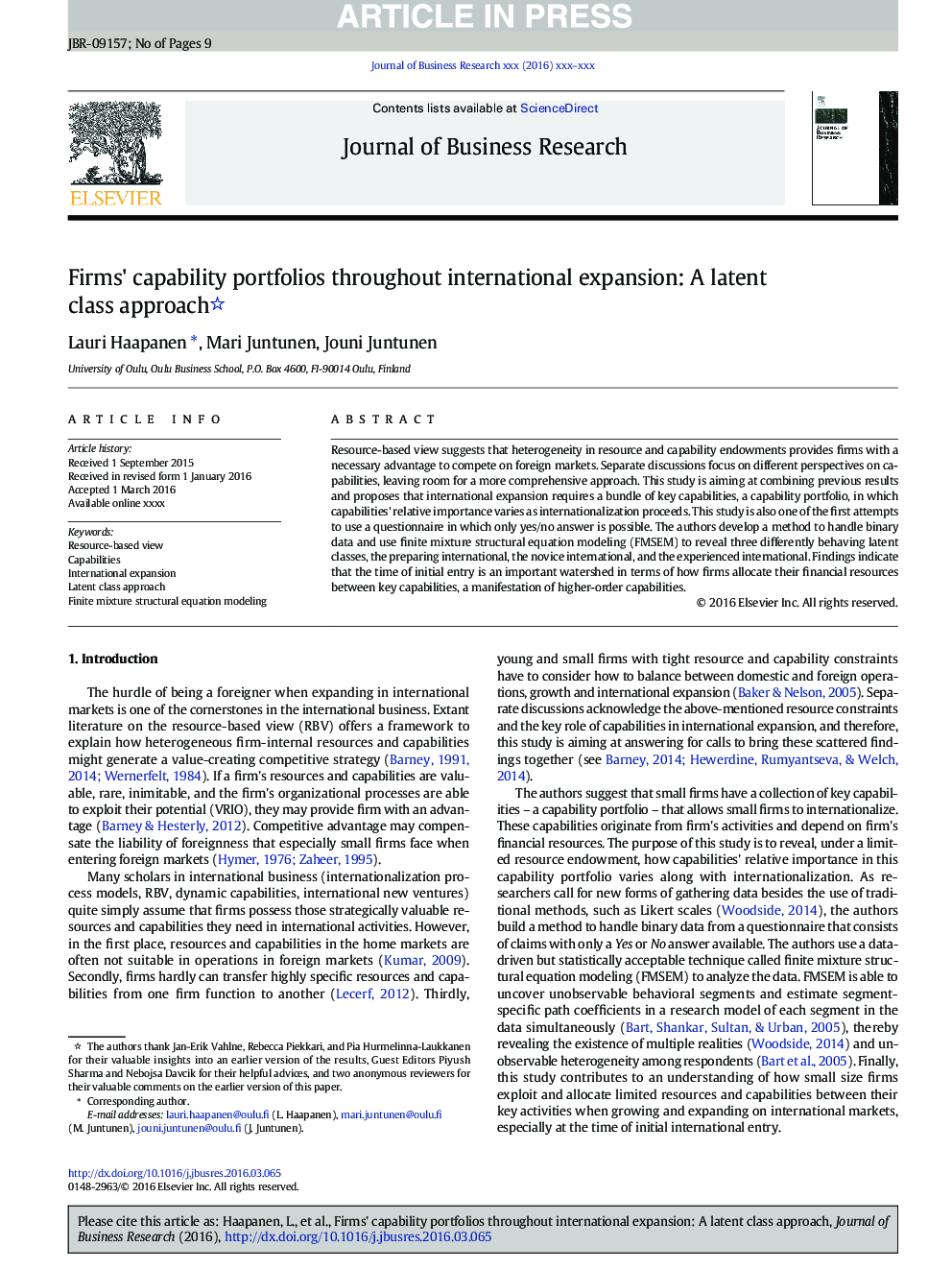| Article ID | Journal | Published Year | Pages | File Type |
|---|---|---|---|---|
| 5109628 | Journal of Business Research | 2016 | 9 Pages |
Abstract
Resource-based view suggests that heterogeneity in resource and capability endowments provides firms with a necessary advantage to compete on foreign markets. Separate discussions focus on different perspectives on capabilities, leaving room for a more comprehensive approach. This study is aiming at combining previous results and proposes that international expansion requires a bundle of key capabilities, a capability portfolio, in which capabilities' relative importance varies as internationalization proceeds. This study is also one of the first attempts to use a questionnaire in which only yes/no answer is possible. The authors develop a method to handle binary data and use finite mixture structural equation modeling (FMSEM) to reveal three differently behaving latent classes, the preparing international, the novice international, and the experienced international. Findings indicate that the time of initial entry is an important watershed in terms of how firms allocate their financial resources between key capabilities, a manifestation of higher-order capabilities.
Related Topics
Social Sciences and Humanities
Business, Management and Accounting
Business and International Management
Authors
Lauri Haapanen, Mari Juntunen, Jouni Juntunen,
